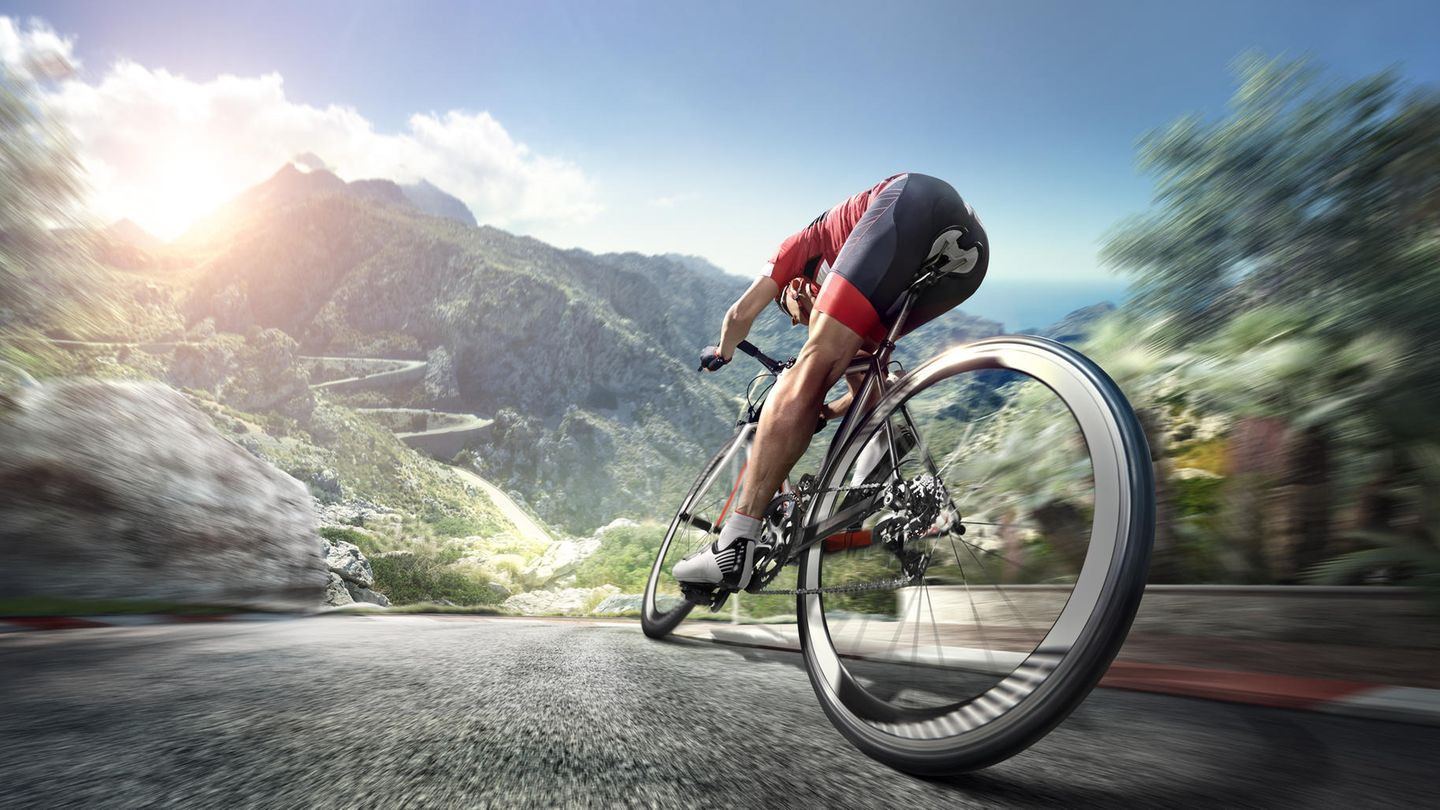Bicycle accessories
Watt knives for the racing bike: improve training thanks to power meters
A watt knife for the racing bike measures how much pressure cyclists bring to the pedals. How the power meters work, for whom they are worthwhile and which models there are.
For a long time, so-called power meters or cotton knives were withheld from cycling professionals, which was due to the very high costs for the devices. In the meantime, they have become more affordable, which is why ambitious hobby cyclists are also interested in the power meters. The point of the watt knives is to record the training progress accurately in order to be able to control your own training better.
What does a power meter do?
A power meter or cotton knife calculates how much power cyclists: apply inside when they pedal. In order to determine the performance of the cyclist, a power meter measures the material deformation in pedal, crank arm or crank and puts it in relation to the cadence. Accordingly, there are three different types of mudflaters for the racing bike:
- cranky
- in the pedals
- or on the chainring
In essence, they all work the same and simply differ in where exactly the material deformation is measured. The determined data then forward power meters via Bluetooth or other wireless data transmission to an output device, for example a smartphone.
Watt knife racing bike: Does that make sense?
So power meters measure data and forward it. Of course, this is good and good, but is of no use if this data is not evaluated. A power meter only makes sense if you want to control your training in a targeted manner using performance data.
There are several ways to train data -based. You can log the average speeds of your training sessions. Or you can stop your time for the same route or record your pulse with a heart rate sensor and draw conclusions about your training progress. So why the mudflat measurement?
Because the data of the power meter are independent of external factors. Your speed on the bike, for example, depends heavily on back or headwind and our pulse is also pressed at least partially by parameters that can be influenced, such as the weather. In addition, heart rate meters always react delayed to stress changes. As a rule, it takes a few seconds to display the higher pulse after pace sharpening or introducing it into a mountain. At this point, a power meter is reaction -fast and therefore more suitable for controlling the bike training.
Ideally, you combine your training data, i.e. measure pulse, watt thickness, speed and set the data depending on, for example, to take your daily form into account during training.
Watt knife racing bike: crank low
Let’s start with the crank arm power meter because the pedal power meter is the simplest and cheapest introduction to the world of the mudflies for the racing bike. Simply because the installation is as simple as with pedal systems and cheap because only a crank arm is needed.
As a rule, crank arm systems only measure one -sided, i.e. only the pressure of a leg, which is then multiplied by a factor of two. When driving a bicycle, a round and balanced occurrence of both legs is advisable, but in reality it is hardly possible because the legs are different for most people, which is why the measurement result of one -sided power meters is usually somewhat inaccurate than that.
The fluctuations mentioned between the right and left leg are between 4 and 6 percent in most people. For hobby athletes, the resulting measurements can be managed, especially when you consider that the crank arm power meters are usually cheaper than pedal systems. Logical: Of course, before buying, make sure how long the right crank is on the chainring and buy the power meter for the other side in the same length.
Watt knife racing bike: Shimano 4III Precision 3
A recommendable introduction to the watt knives for the racing bike is the . According to the manufacturer, its button battery lasts 800 hours before it has to be changed. In addition to the watt thickness of zero to 4,000 watts, the power meter also measures the cadence of the cyclist and from 30 to 170 kicks per minute. The 4III Precision communicates via Bluetooth with a bicycle computer or cell phone. Compatible apps are, for example, Zwift, Traineroad and Systm, with which you can record your training exactly and later evaluate.
Pedal systems
In the case of power meters in the pedal, you usually have to save the length of the crank arm once, because a longer crank arm results in a longer circular scope of the circle, the cyclist: In the inside, put it into the pedals when kicking. If you enter the wrong length there, the result falsifies. In the case of power meters that are in the crank arm or on the chainring, this step is no longer necessary.
In addition, you should observe the screw depth of the pedal axis for pedal systems. Logical: the smaller the one, the lower the material deformation and the longer it is, the greater the material deformation. Here, too, it is important to observe the manufacturer’s information exactly, otherwise the measurement results could be falsified.
In addition, the pedals are one of the most exposed components on the bike. An unfortunate fall and the expensive power meter is gone. Power meters on the chainring or in the crank arm are a little better immune to accidents.
Pedal power meters offer a practical advantage over one-sided crank arm: the assembly is even easier. This should be particularly interesting for owners of several bikes who have no desire to buy several watt knives and who are interested in changing the power meters quickly. The pedals can be easily turned on every now and then.
As for the measurement, most pedal systems also work unilaterally. The one-sided pedal power meters move at the level of the crank arm systems. Pedal watt knives on both sides cost around 800 euros and more.
Watt knife racing bike: Garmin Rally
A bilateral pedal power meter is, for example, the which is available in different versions:
- Garmin Rally XC 100/200
- Garmin Rally RS 100/200
- Garmin Rally RK 100/200
First looks cryptic, but is simple. The 100 and 200 clarify whether the power meter is in one or two pedals. Logical: 100 stands for simple and 200 for double. XC, RS and RK provide information about the pedal click system. The pedals for racing bike and gravel or mountain bike often differ in the click system.
- Garmin Rally XC stands for the Shimano SPD-Mount (Gravel and Mountainbike)
- Garmin Rally RS stands for Shimano SPD-SL-Mount (racing bike)
- Garmin Rally RK stands for the look-keo-mount (racing bike)
Nice: If you drive both mountain bikes and racing bikes, you are happy to get the power meter in the various pedals because the measuring instrument is in the pedal axis. And you can mount this pedal axis into the different Garmin pedals. The conversion takes between ten to 15 minutes and requires some manual skill in addition to the right tool.
Otherwise, the Garmin power meter understands the in-house bicycle computers very well. But cooperation with other bicycle computers is also possible. According to the manufacturer, the integrated battery lasts up to 120 hours, but is quite special. It is a CR1/3N or LR44/SR44. It is worth buying the batteries in stock here.
Watt knife on the chainring
Power meters that are on the chainring usually measure the power of the left and right leg. However, their assembly is very complex because not every power meter can simply be screwed to the old chainring, which is why they usually have to buy and install chainring, crank arms and power meters from a manufacturer.
This also means to take out the old crank axis, the crank arms and the chainring and then install the new equipment with power meters. This can be a tedious undertaking for beginners or inexperienced screwdrivers. And then the power meter is also limited to a bike, quick change like the pedals is not possible.
Watt knife racing bike: Sram Krg Red Axs D1 Quarq Dub
The market leader of the chain leaf power meters are the cotton knives of Quarq in connection with the SRAM chainrings. The manufacturer’s models also include the which is available in different versions when it comes to the crank arm length and the size of the chainring.
With a price of 1120 euros, it is one of the most expensive power meters in comparison, which is also due to the fact that the package contains a crank set. If you know a suitable chainring and crank arms installed on your bike, you can save the money and buy the power meter individually.
Otherwise, the power meter measures the performance of both legs and works with many bicycle computers thanks to Bluetooth or Ant+. If you already have a bicycle computer, you should of course check beforehand whether the power meter is compatible with it.
Measure training progress: FTP value
In order to recognize the training progress, athletes are happy to use the so-called FTP value. This can be determined particularly well with power meters because your data is independent of external factors. FTP stands for “Functional Threshhold Power”, which literally means “functional threshold performance”. This threshold performance (FTP value) represents the power a cyclist can maintain just as much over a time window of 60 minutes.
With 100 percent of the FTP value we can ride a bike for exactly one hour. We can cycle 80 percent of our FTP value longer. And if we drive over our circumstances (for example, 150 percent), the speed can only be maintained for a short time. If we start our training with the power meter, it makes sense to first determine the FTP value, then train and to repeat the same test again in a month later. If the result improves, we see relatively exactly how much percent we have increased our performance.
How to determine the FTP value
Determining the FTP value is relatively easy in theory. Either you drive for 20 minutes as quickly as you can, calculate the average of the measuring value of the power meter and multiply the result by 0.95. Or you can simply cycle for 60 minutes with your maximum performance and calculate the average from the data of the power meter. For both methods, there are constant test tracks or ideally a roller trainer in order not to be exposed to external factors such as traffic or weather conditions.
*This article contains so-called affiliate links to products in online shops. If a user clicks on it and buys something, the publisher receives a commission from the dealer, not from the manufacturer. Of course, where and when you buy a product is up to you.
Source: Stern
I am Pierce Boyd, a driven and ambitious professional working in the news industry. I have been writing for 24 Hours Worlds for over five years, specializing in sports section coverage. During my tenure at the publication, I have built an impressive portfolio of articles that has earned me a reputation as an experienced journalist and content creator.




